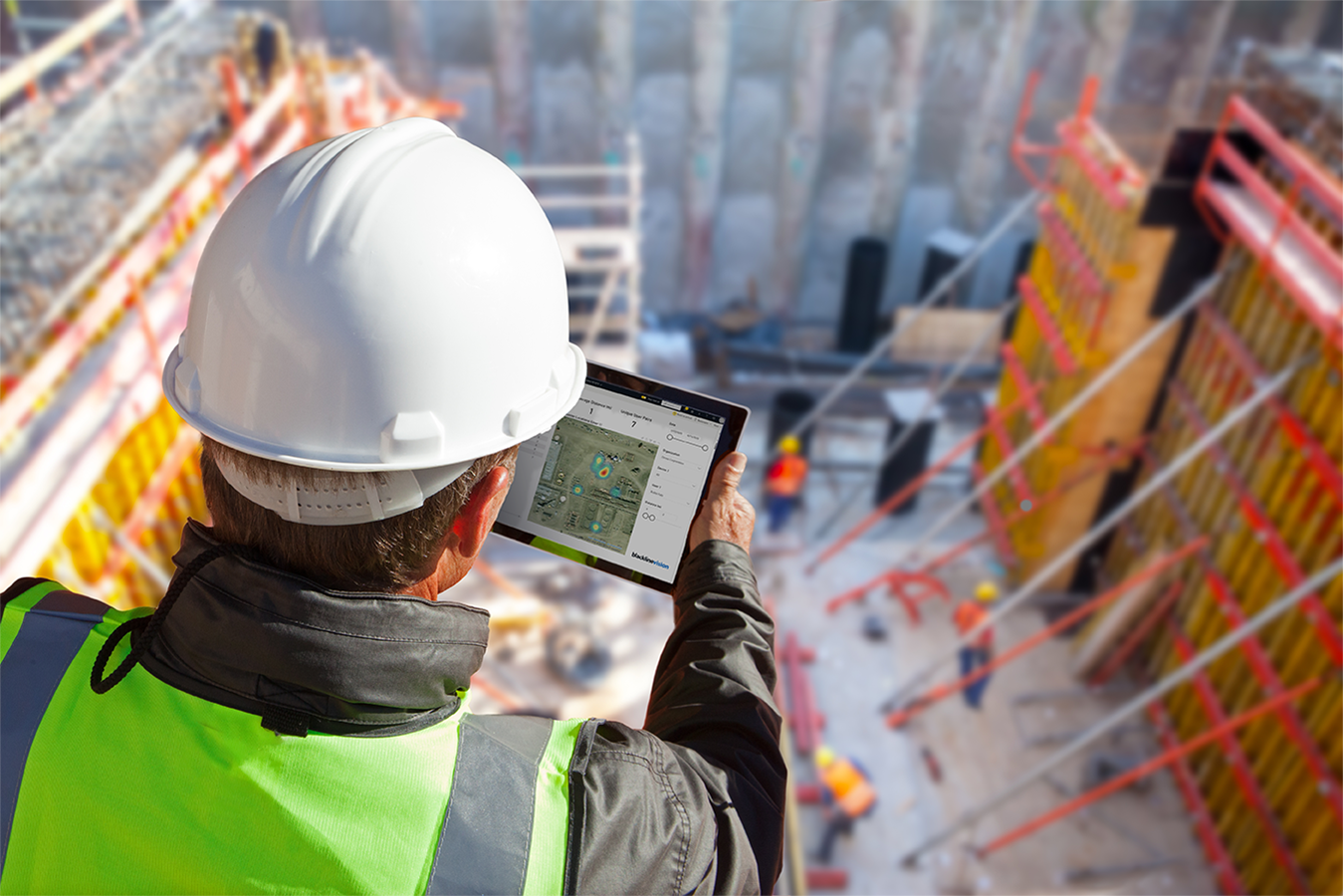Blackline Safety is a technology leader driving innovation in the industrial workforce through IoT (Internet of Things). With connected safety devices and predictive analytics, Blackline enables companies to drive towards zero safety incidents and improved operational performance. Blackline provides wearable devices, personal and area gas monitoring, cloud-connected software and data analytics to meet demanding safety challenges and enhance overall productivity for organizations with coverage in more than 100 countries. Armed with cellular and satellite connectivity, Blackline provides a lifeline to tens of thousands of people, having reported over 200 billion data-points and initiated over seven million emergency alerts. For more information, visit BlacklineSafety.com and connect with us on Facebook, Twitter, LinkedIn and Instagram.
Improving Safety in Construction with Connected Technology
Blackline Safety, Leader in Connected Gas Detection & Lone Worker Safety
September 14, 2022
The construction Industry is consistently ranked as one of the most dangerous environments to work in around the world. OSHA reports that 1 in 5 deaths among U.S. workers occurs in the sector. And, according to the World Risk Poll, the second highest reported workplace injury rate globally (22%), was among those who worked in construction, manufacturing or production. In this high-risk context, accurate, real-time monitoring of safety conditions can protect workers and equipment from damage ensuring everyone gets home safe and sound at the end of the day.
With the advent of digital transformation and IoT, connected safety solutions have up-leveled programs from simple reactive compliance to proactive incident prevention. The construction industry is seeing an evolution in safety, with improvements in equipment and wearable technology helping to push the industry forward and slowly drive down the number of preventable injuries and deaths that occur each year. Connected safety solutions are the bedrock of this progress.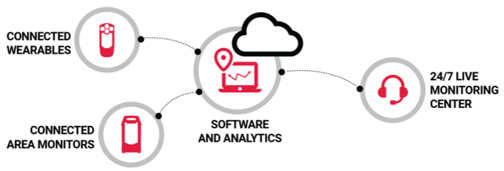 What is a connected safety solution?
What is a connected safety solution?
Connected safety solutions are comprised of a network of cloud-connected devices, including area monitors and personal wearable devices that, when coupled with an online dashboard, provide full visibility into the safety of facilities and workers. The data streamed from those devices deliver powerful reporting capabilities to a manager’s fingertips, such as real-time compliance status (ensuring bump and calibrations are completed for the entire fleet of devices), but also that the devices are charged, turned on and actively being used throughout a shift. This information can be viewed from anywhere in real-time without the need to wait until after a device is docked to receive the data. Further data analysis can also identify and predict potential hazards so corrective action can be taken before they become incidents.
How do connected safety solutions reduce risks to construction workers?
The easiest way to explain the many benefits of connected safety is to walk through examples from the field. Here are some common risks that occur in the construction industry and details of how connected safety solutions can reduce them.
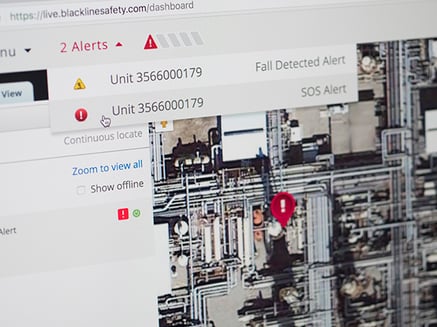 Connecting workers across the site
Connecting workers across the site
A frequent scenario in the construction industry is working at height, and Falls From Height are one of the largest contributors to occupational fatality statistics with it being the #1 cause of nonfatal preventable injuries (NSC). As part of a connected safety solution, wearable devices feature sensors and functionality which automatically detect falls, lack of movement, and missed check-ins, any of which could indicate that a worker needs assistance. Imagine workers on a high-rise building, far above the ground - injured and unable to call for help. A connected safety solution removes this vulnerability. Similarly, the technology benefits lone workers who may be spread across a large construction site with limited contact and out of view of other people.
With connected devices, workers can also activate SOS alerts to immediately connect them to safety monitoring personnel in the event of an incident requiring assistance. And, if exposure to toxic or flammable gases is a potential risk during their workday, connected worker devices are flexible and can be configured to include single- or multi-gas detection capabilities. Real-time awareness of workers means safety team leaders are reassured, knowing that someone is monitoring each team on an ongoing, uninterrupted basis should the worst occur.
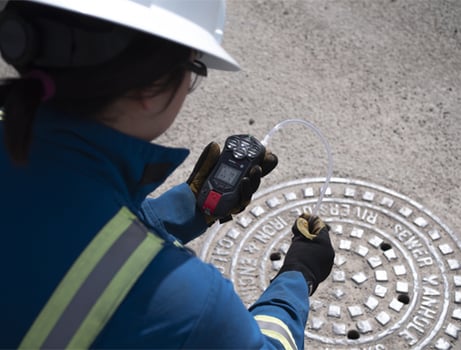 Confined spaces
Confined spaces
Another significant risk to construction workers is that of confined space entry (CSE), such as working in tunnels or trenches, entering a storage tank or container. Hazardous gases can quickly concentrate to dangerous levels or displace Oxygen in poorly ventilated spaces such as these, leaving the worker no time to react. Brownfield sites in particular can contain degradable materials that can generate gases on site. When construction workers perform tasks such as trenching and shoring, harmful gases can be released into the atmosphere and can even migrate through subsoil and cracks into a completed building.
Using connected safety devices ensures these areas are safe for workers before they enter and alerts them to evacuate if gas levels exceed safe thresholds at any point.
Continuous monitoring further makes it possible to identify gas leaks on a construction site, preventing potentially catastrophic incidents. For example, 24/7 area gas monitoring can detect if a piece of equipment or infrastructure is gradually releasing more vapors into its surroundings, indicating a need for repair or replacement. In addition, many materials used for the construction of buildings can release toxic compounds (VOC’s), and petrol-powered equipment such as generators can produce Carbon Monoxide. With a connected safety system, the gas and VOC readings can be viewed in real-time using an online dashboard to keep an eye on developing dangers
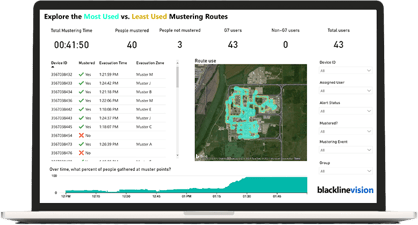 Streamlining evacuation management
Streamlining evacuation management
Aside from toxic gases, flammable gases released from storage tanks during demolition works for example, present a significant risk of fire and explosion. In the event an emergency does happen, connected safety solutions streamline reactive responses, making evacuation easier and faster.
Safety personnel are alerted to sudden increases in the levels of hazardous gases, enabling quick evacuation of workers from affected areas, as well as checking no worker is left behind. During an evacuation, team leads can account for the location of every person wearing a connected safety device in real-time to ensure they safely reach muster points. Since worker locations can be viewed on the dashboard, assistance can be sent directly to anyone that doesn’t safely evacuate, saving critical seconds and making the difference between rescue and recovery. Additionally, because connected devices capture a variety of data, rescue crews can determine the response needed to an incident - whether it be a fall, no-motion or exposure to high levels of gas where full breathing apparatus may be required.
Overcoming complacency
We can probably all relate to the state of being ‘on autopilot’. Along with worker complacency – a by-product of habit – this tendency has been identified as a significant cause of workplace injury.
Repeated actions taken over time without consequence embed the idea that those actions are safe, even if they are inherently not. Since 5% of accidents are caused by unsafe behavior rather than hazardous conditions (RoSPA), this represents a big problem in any industry, and in particular where there is risk from operating machinery and collision with heavy equipment such as on a construction site. Workers do a job or perform a task automatically while not really thinking about how they are doing it, or whether it should be approached differently. This may be because they have never understood the risks associated with a particular task or haven’t been trained to take proper responsibility for their own safety.
One way to help overcome complacency is to give workers digital tools to encourage awareness of their actions and the potential consequences, leading to them correcting behavior. Connected technology plays an important part here. Analysis of behaviors and incidents by management can drive fundamental change, when data collected is scrutinized to build a picture of what is happening and who is putting themselves at risk. By approaching the problem in two ways – at worker awareness level and through data interrogation, real improvements can be generated in terms of workforce safety.
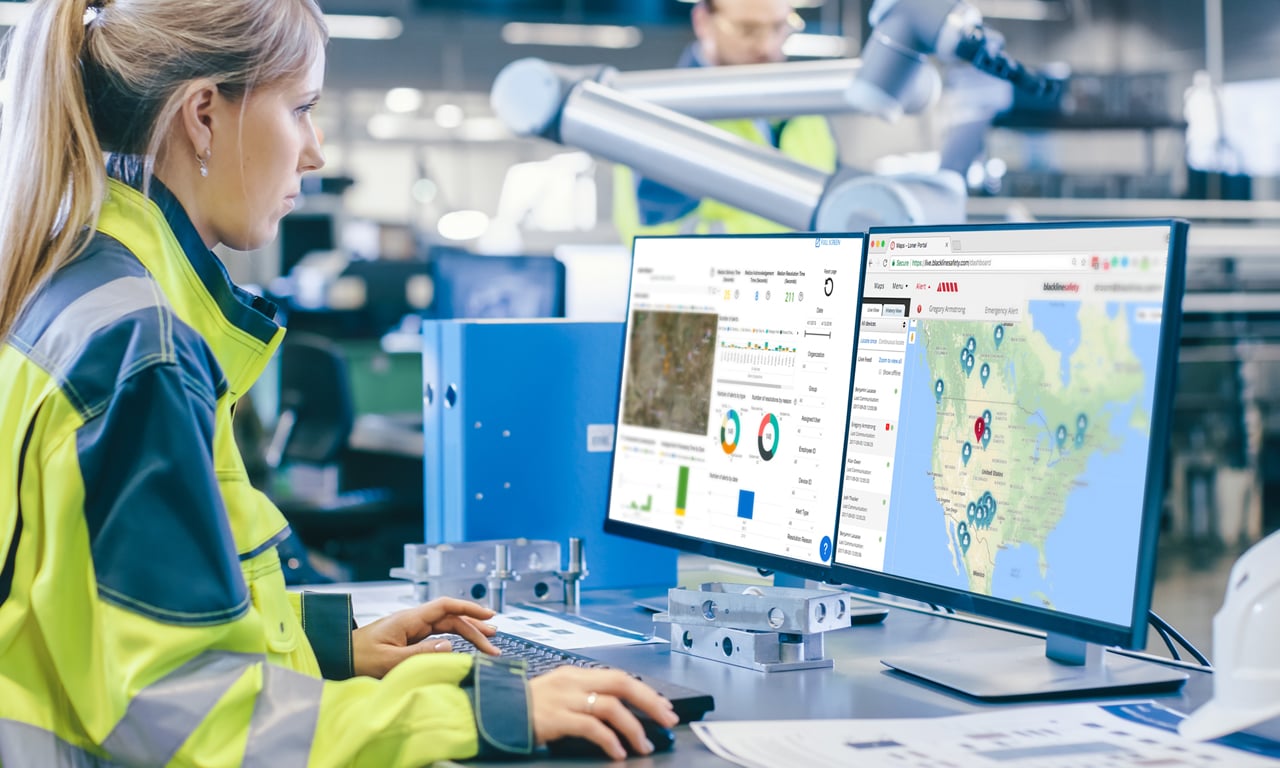 Predicting safety risks through data analytics
Predicting safety risks through data analytics
On top of those identified above, unrecognized risks can exist in any working environment, and cause worker safety incidents resulting in unexpected downtime and costs. Connected safety solutions coupled with data science and analytics, can identify hazards before they harm workers or damage equipment. The ability to detect patterns through connected device readings allows safety managers and operators to take proactive steps.
For example, repeat fall detection alerts in the same location may indicate a slippery surface. Taking proactive measures by cleaning, de-icing or redesigning the site layout can protect workers from serious falls and keep operations running smoothly and workers on the job.
On a larger scale, since all gas reading data, for example, is collected and streamed to the cloud, data analytics from connected devices can be used to highlight areas on site with potential risk. Gas levels below the threshold for alarms typically go unnoticed until an incident occurs. Reporting on these exposures gives operators the ability to proactively fix leaks or faulty equipment. Preventative maintenance can mitigate a potentially major rescue and repair event.
Connected safety to improve outcomes
Connecting workers in dangerous environments like construction sites can ensure everyone is accounted for – at all times. Data analytics provided by a connected solution furthermore enable potential risks to be identified and incidents avoided, improving outcomes for workers in the construction industry and driving down the number of workplace injuries and fatalities year on year.
Get In Touch
Let’s start a discussion about your safety challenges and needs.
Related Blog Posts
Real-Life Incident: Mason’s Story — High H2S Exposure
November 25, 2025
“Shortness of breath. Request EMS to the location.” How Real-Time Gas Detection Led to a Quick Save Exposure to toxic gases can go from a strange...
3 Creative Applications of Blackline Safety Technology
July 29, 2025
Designed for Safety. Adapted with Ingenuity. Blackline devices are built for tough jobs—gas detection, lone worker monitoring, real-time emergency...
Real-Life Incident: Superior Fire Department Drug Bust
July 28, 2025
G7 helpsHAZMATteam safely navigate Wisconsin's largest DMT lab When Superior Wisconsin Fire Department received the call, the situation was...



